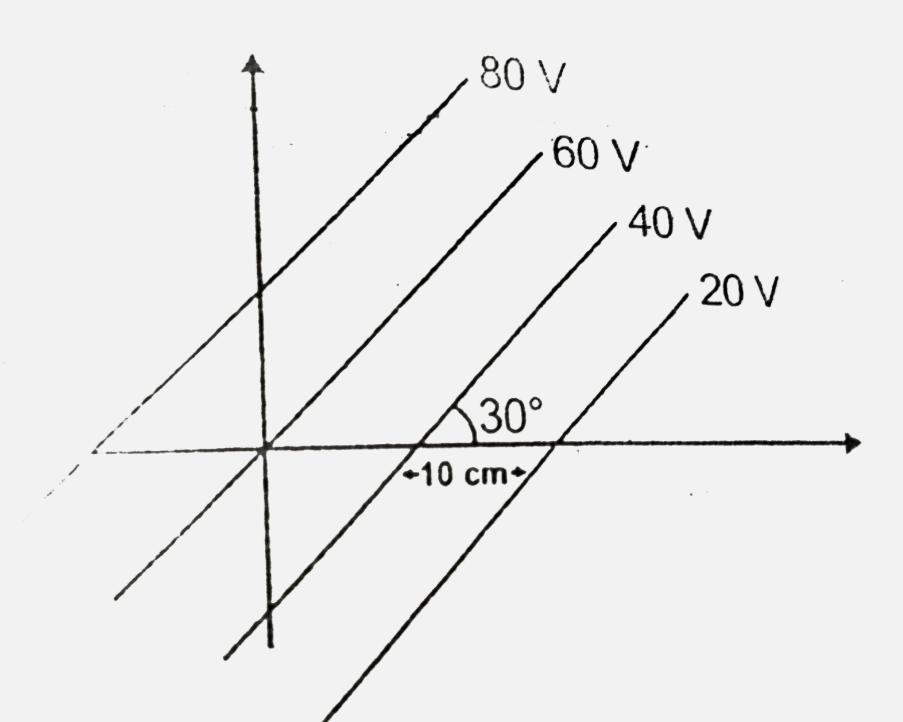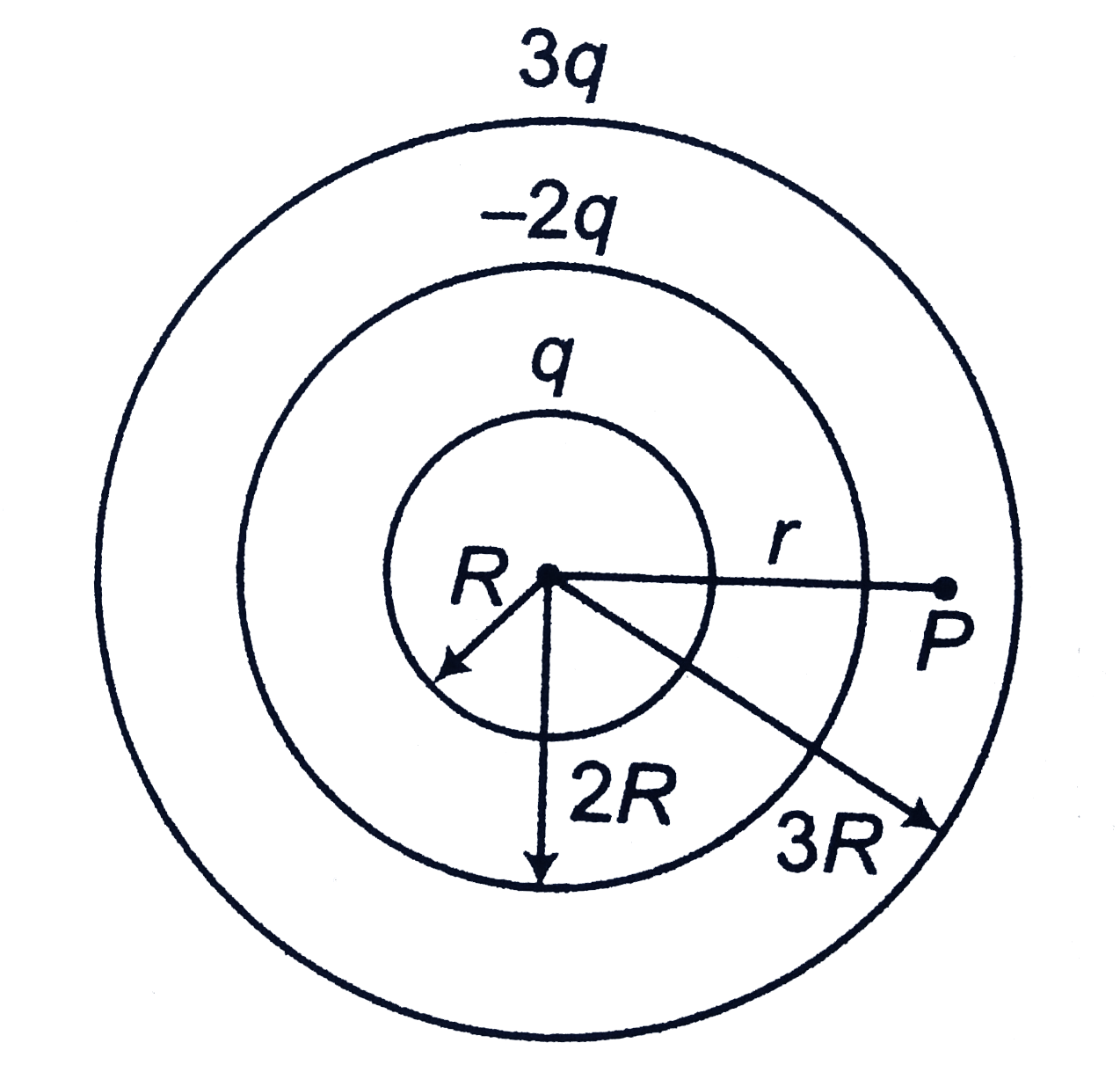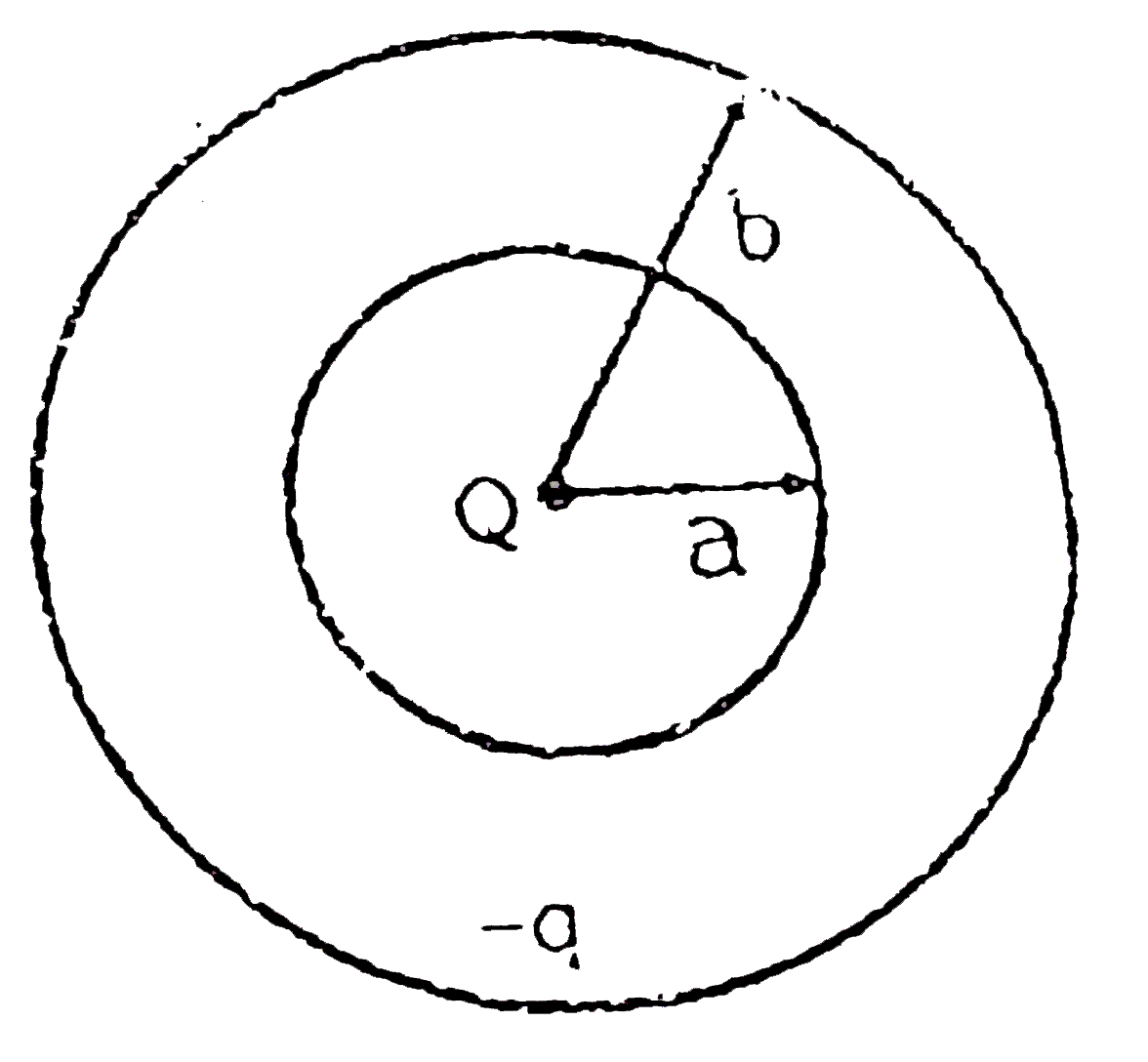As shown in Figure, charge Q is kept in the inner cavity and a charge of 2Q and 3Q are imparted to the inner and outermost shells.
(a) Find charge at each of the surface .
(b) Find E in the first annular region and outside.

(a) −Q,3Q,−3Q,6Q, (b)kQx2,kx3Qx2,kx6Qx2
Topper's Solved these Questions
- ELECTROSTATIC POTENTIAL AND CAPACITANCE BOOK - AAKASH INSTITUTECHAPTER - ELECTROSTATIC POTENTIAL AND CAPACITANCE EXERCISE - ASSIGNMENT (SECTION-A) Objective Type Questions (Only one answer)
47 Videos
- ELECTROSTATIC POTENTIAL AND CAPACITANCE BOOK - AAKASH INSTITUTECHAPTER - ELECTROSTATIC POTENTIAL AND CAPACITANCE EXERCISE - SECTION-B (OBJECTIVE TYPE QUESTIONS (ONLY ONE ANSWER) )
1 Video
- ELECTROSTATIC POTENTIAL AND CAPACITANCE BOOK - AAKASH INSTITUTECHAPTER - ELECTROSTATIC POTENTIAL AND CAPACITANCE EXERCISE - ASSIGNMENT SECTION - D
13 Videos
- ELECTROMAGNETIC WAVESBOOK - AAKASH INSTITUTECHAPTER - ELECTROMAGNETIC WAVESEXERCISE - ASSIGNMENT SECTION - D Assertion-Reason Type Questions
25 Videos
- GRAVITATION BOOK - AAKASH INSTITUTECHAPTER - GRAVITATION EXERCISE - ASSIGNMENT SECTION - D (ASSERTION-REASON TYPE QUESTIONS)
16 Videos
Similar Questions
In a certain region of space the electric potential V is known to be constant. Is the electric field in this region (a) positive (b) zero ,or (c ) negative ?
View SolutionIf the given figure shows equipotential surfaces, then the magnitude of electric field is

View SolutionIn the following question a statement of assertion (A) is followed by a statement of reason (R )
A: For a given potential function, electric intensity function can be uniquely derived.
R : For a given electric intensity function, electric potential function can be uniquely derived.
View SolutionA : Different electromagnetic waves differ considerably in their mode of interaction with matter.
R : Different electromagnetic waves have different wavelength or frequency.
View SolutionA : The gravitational force does not depend on the intervening medium .
R : The value of G has same value anywhere in the space
View SolutionThree conducting spherical shells have charges q,−2q and 3q as shown in figure. Find electric Potential at point P as shown in figure.

View SolutionCharges Q, 2Q , and -Q are given to three concentric conducting sphereical shells A, B and C respectively as shown in figure. The ratio of charge on the inner and outer surface of shell C will be
View SolutionA charge Q is kept in the inner cavity and a charge 2 Q is given to the inner shel. A charge 3 Q is given to the outermost shell, as shown in Fig. 1 (a).22 Find the charges at the surfaces A,B and C.

View SolutionFind charge on each spherical shell after joining the inner most shell outer most shell by a conducting wire. Also find charges on each surface.

View SolutionShown in the figure a spherical shell with an inner radius 'a' and an outer radius 'b' is made of conducting metarial. A charge +Q is placed at the centre of the spherical shell and a total charge -q s placed on the shell. Charge -q is districuted on the surfaces as :

View SolutionA point charge +q is placed at the centre of a conducting spherical shell of inner radius a and outer radius b. Find the charge appearing on the inner and outer surface of the shell.
View SolutionIf a thin spherical shell of radius r and charge q is kept inside a thick spherical shell of inner radius 2r, outer radius 3r, and total charge 2q. (a) Find the charge distribution on each surface. (b) Find the self-energy of each charge distribution. (c) Find the total electrostatic energy stored in the system.
View SolutionA spherical conducting shell of inner radius r1 and outer radius r2 has a charge Q.
A charge q is placed at the centre of the shell. Find out the surface charge density on the inner and outer surface of the shell.
Is the electric field inside a cavity (with no charge ) zero. Independent of the fact wheather the shell is spherical or not ? Explain.
View SolutionThree conducting spherical shells have charges q,−2q and 3q as shown in figure. Find electric Potential at point P as shown in figure.

View SolutionCharges Q, 2Q , and -Q are given to three concentric conducting sphereical shells A, B and C respectively as shown in figure. The ratio of charge on the inner and outer surface of shell C will be
View SolutionA point charge +q is placed at the centre of a conducting spherical shell of inner radius a and outer radius b. Find the charge appearing on the inner and outer surface of the shell.
View Solution

